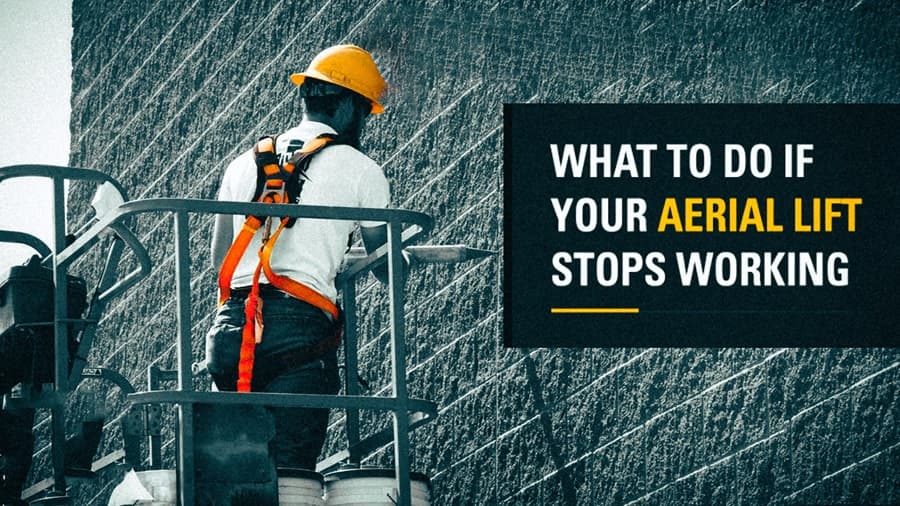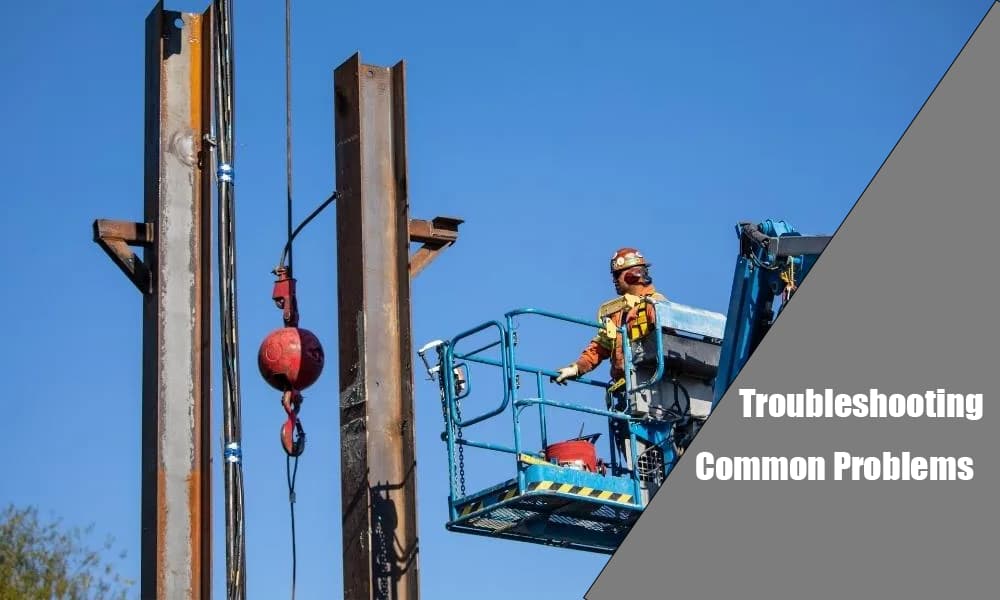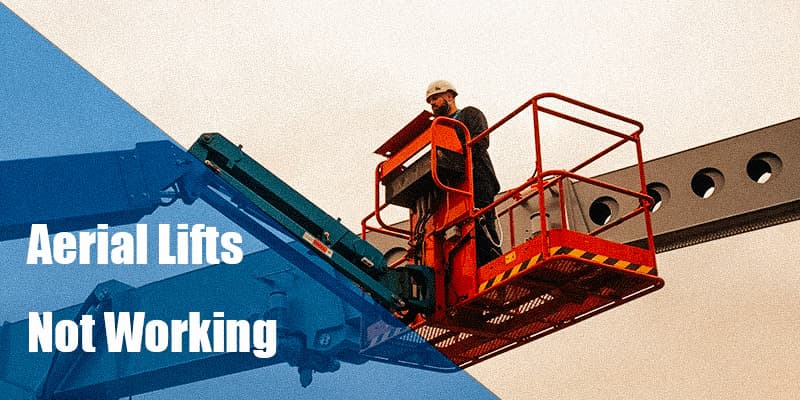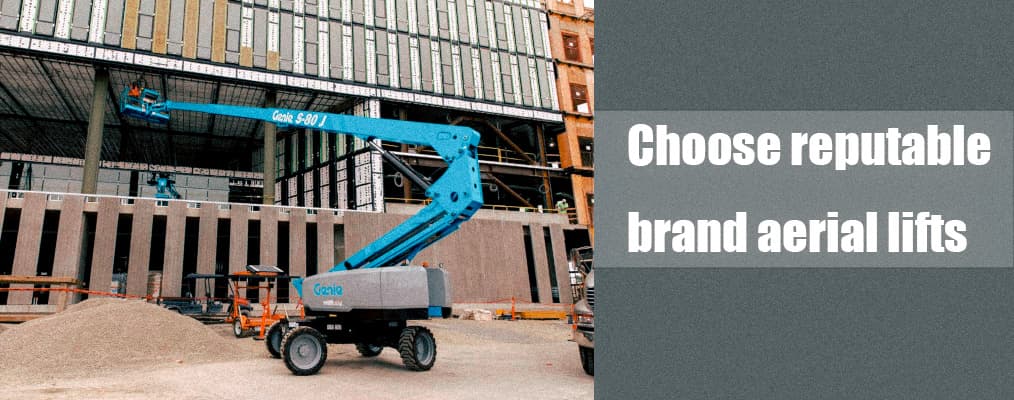Aerial lifts are versatile mobile platforms that can lift workers and equipment to considerable heights and have become an indispensable tool for a wide range of industries. However, an aerial lift failure can pose a serious hazard to the operator and those on the ground.
What to do if your aerial lift stops working? As an aerial lifts expert, Holdwell will take you through this article to walk you through how to act effectively when aerial lifts stop working.
What to do if your aerial lift stops working?

When aerial lifts stop working, it is very important to take appropriate action immediately regarding the safety of the operator and any nearby personnel. The following steps are essential:
Keep Calm
One of the things people are best at is losing marks. In the event of aerial lifts not working, the first and most important step is to stay calm. Aerial lifts are designed with many safety features and rescue protocols for these situations. Panicking is only going to muddy the waters with poor decision-making and maybe even unsafe actions.
Assess the Situation
Quickly assess what caused the lift to fail. This includes checking for any obvious problems such as a power outage, mechanical failure, or other malfunction. Make sure the platform is level and check the surroundings for any immediate hazards. Check the control panel for error messages or indicators such as dead batteries, exhausted fuel. This assessment is critical to understanding the nature of the failure and determining the safest course of action.
Communicate
Using whatever emergency communication system may be available, let the ground staff know where you are and what is wrong with you, your exact location within the facility and the current status of the cause and nature of such emergency. Proper communication serves to guarantee timely dispatch of rescue personnel as well as a coordinated response. Keep in constant communication in order to update any changes in the situation with on-scene officials.
Protect Yourself
Ensure safety by putting on the safety harness that has been provided and properly fitting it to the anchor points on the platform. Confirm that the harness is tightly fitted and there are no defects with the harness and tether. Stay within the platform; do not climb out or jump out.
Never try to Repair by yourself
Attempting repairs without the necessary expertise can be dangerous and could further compromise the stability and safety of the lift.
By taking these steps – staying calm, assessing the situation, communicating effectively, protecting yourself and avoiding substandard repairs – you can significantly reduce the risks associated with aerial lifts stop working and ensure a safer outcome for all involved.
Troubleshooting Common Problems

A. Power Failure
Check battery connections
- Look for any visible corrosion or loose connections on the battery terminals
- If safe to do so, ensure the battery is properly seated in its compartment
Check fuel level (for engine-powered lifts)
- If your lift is powered by an internal combustion engine, check the fuel gauge
- Listen for any sputtering that might indicate low fuel
B. Hydraulic System Problems
Look for visible leaks
- Scan the lift for any signs of hydraulic fluid leakage, which often appears as an oily substance
- Pay particular attention to hydraulic lines and connection points
Check hydraulic fluid level
- If possible and safe to do so, locate the hydraulic fluid reservoir and check the fluid level indicator
C. Control Failures
Loose Connections Check
- Inspect the control panel; look for any wires or connections that may be loose from their terminals
- Examine the control panel display for error messages or warning lights
Reset system if possible
- Some equipment may have a reset feature; use of same to be governed by the operator’s manual
- Never try to reset if you are unsure of procedure to follow
D. Structural Problems
1.Check it out
- Check the lift structure for bent or broken pieces
- Check the metal for cracks or deformation that would indicate stress or strain (include fatigue), damage, and overuse.
2.Use your ears
- Creaking, grinding while lift/lowered/ weight shift
- Note any unusual noises and where they are coming from

Prevention & Maintenance
A. Importance of regular inspections
- Daily visual checks before operation
- Scheduled comprehensive inspections by qualified technicians
- Compliance with manufacturer and regulatory inspection requirements
B. Operator training and certification
- Initial certification programs
- Regular refresher courses
- Familiarization with specific equipment models
C. Keep maintenance records
- Documentation of all inspections, repairs, maintenance activities
- Tracking of equipment hours and usage
- Digital systems for easy access to records and analysis
D. Update equipment when necessary
- Keeping abreast of manufacturer updates and recalls
- The replacement of obsolete or worn out parts
- When replacing old machines, think about newer models with better safety features that are now available
Implementing a robust prevention and maintenance program is crucial for minimizing the risk of aerial lift malfunctions and ensuring operator safety. Regular inspections, proper training, diligent record-keeping, and timely equipment updates all contribute to a safer work environment and more reliable lift operation.
 When your aerial lifts stop working, remember that panic can lead to poor decision-making, potentially exacerbating the situation. By remaining calm and following established safety procedures, you greatly increase the chances of a safe resolution. Always prioritize your safety and that of others around you, and don’t hesitate to call for professional assistance when needed.
When your aerial lifts stop working, remember that panic can lead to poor decision-making, potentially exacerbating the situation. By remaining calm and following established safety procedures, you greatly increase the chances of a safe resolution. Always prioritize your safety and that of others around you, and don’t hesitate to call for professional assistance when needed.
And lastly, one has to select a reputable aerial lift. Holdwell sells the used aerial lifts of many well-known brands like Genie, JLG, Dingli, Haulotte and more. These are proven models in the market and have good quality. Holdwell ensures each used aerial lift is very strict in inspection and maintenance to guarantee your safety. The selection of reputable manufacturers and suppliers will increase your confidence in the reliability and safety of your elevated work platforms which would lower the chances for equipment failure risks as well.




